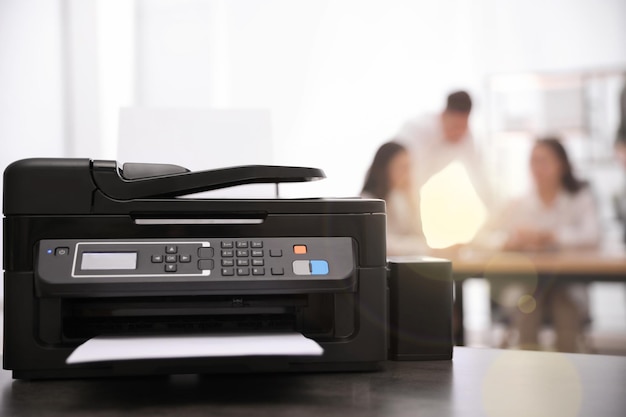6 Ways Firms Can Send Important Business Documents Across
5 Mins Read
Published on: 03 March 2023
Last Updated on: 08 November 2024

toc impalement
Securing important documents is of utmost priority in any organization or business. No matter the type, sending documents quickly, securely, and reliably is essential for success.
Then again, improving your business document dissemination is one of the key components to work on. Therefore, you need to understand the essence of this business process and keep following this article.
6 Ways To Improve Your Business:
There are several methods you can use to send business documents. They range from traditional methods like using the post office to more modern methods like faxing online, using private couriers, email, and file-sharing services.
It’s vital to weigh the benefits of each approach against any potential drawbacks before settling on one.
This article will explore six of the most common and effective ways businesses can send critical information, so read on to learn more.
1. Online Faxing:

Traditional faxing involves using a fax machine to send messages or documents. However, fax machines have become obsolete. Nowadays, most companies have moved towards more modern technologies.
However, fax is still being used in some companies as they are secured and deter internet threats. This means your business documents cannot be intercepted using IoT threats.
Online faxing allows you to send a fax without having a fax machine. You only need an internet connection and a device to access the online fax service through an app, browser, or email.
However, you will need a paid fax account to send and receive a fax online. The online faxing process may vary depending on your account provider. For example, you can do online faxing with Google and other platforms.
Online faxing allows you to receive official papers from anywhere, making it a suitable solution for remote working or hybrid working spaces.
Secondly, you don’t have to incur the cost of printing documents or even having a fax machine. It’s also a faster solution for sending documents than physical delivery.
2. Physical Delivery:
Physical delivery is a reliable traditional method for sending vital records. Instead of using the postal office, you will be delivered the documents by private courier. This may eliminate potential security issues, such as lost or intercepted mail.
When using physical delivery, there is an added assurance that the document has arrived safely. This is due to direct contact between sender and recipient. Which in turn, ensures all documentation is accounted for at the destination.
This option also offers more control for the sender and receiver because you can set specific instructions, such as only releasing the documents to someone authorized. However, the downside to this method is that it can be expensive.
This is because you have to hire a courier service within the same city or across the country. If privacy is of the essence, then hand delivery might be your best choice.
Physical delivery could be faster compared to other solutions. Documents may take more than 24 hours to reach the receiver, depending on the courier and the location.
3. Cloud Solutions:

Cloud transfer is an online service that allows data transfer on remote servers worldwide.
These innovative solutions enable users to send, receive, and access their digital records anytime and anywhere. This, in turn, allows for greater flexibility and collaboration.
Cloud-based sharing is also typically more secure than other methods. Users can control who has access to their files and can set up additional features for added security.
Furthermore, cloud storage services usually provide backup capabilities. This keeps your business documents safe in case of system failures or other unforeseen events.
4. Mailing:
Mailing is one of the oldest methods of document transfer. It continues to be widely used today partly because of its affordability.
Another reason is that it ensures that all paperwork sent through the mail is tracked. Because of this, companies can rest assured that their documents are making their way to their intended recipients. There are minor downsides to this method, however.
Occasionally, it takes several days to reach its intended recipient, even if you choose priority mail. This makes it unsuitable for time-sensitive and high-value items, as security while handling cannot be assured.
5. Email:

Email is among the fastest and most convenient digital methods for distributing essential papers. All you need is an email address to send someone a document as an attachment in an email.
An advantage of this method is its speed of delivery. Once you’ve sent the email, your receiver can open it immediately. However, it’s less secure than the other methods.
Your documents could end up in the wrong hands through email hacking. Not only that but your emails could also be forwarded to another receiver.
However, most email platforms have size limits for email attachments, so you may have to send multiple emails or use an entirely different service. This can be a problem for businesses that must send large files, such as contracts or presentations.
6. File-Sharing Services:
Lastly, another prevailing way to send business documents is through file-sharing services. It offers a range of features and tools that can help businesses protect their documents.
File-sharing services usually have password encryption technology to protect your data from unauthorized access.
Files can also be shared instantly between people so long as they both have accounts on the service.
This makes it easy to collaborate on real-time projects without a third-party distribution service. Despite this, some file-sharing services may offer low levels of security. Thus, you must research and select the service that fits your specific needs.
Your business can use these six best options when sending crucial paperwork. Regardless of your choice, always take the necessary steps to determine which is best for your intended purpose.
Tips For Businesses Sending Important Documents
Businesses that need to share important information must ensure their safe delivery. Whether you’re sending sensitive information or contracts, here are some security tips:
1. Use A Reliable Service:
When selecting a service for your official files, look for companies with experience handling sensitive information.
Companies that are among the most reliable always have years behind their belts in document security. They also offer secure delivery options such as tracking numbers and encryption services.
2. Ensure Proper Labeling
Always ensure your documents have the appropriate labels so they can be easily identified at each point during the process.
Labeling should include both sender and recipient contact information, as well as any special instructions needed. In addition, double-check all labels, as incorrect labeling can lead to delays or even lost packages.
3. Use VPNs When Online
Virtual private networks (VPNs) encrypt all traffic between two points on a network. This makes it almost impossible for anyone outside that connection to intercept your data in transit.
Unlike email, VPNs require additional software or hardware, so they may not be suitable for everyone. Their use also depends on a business’s technical capabilities and budget constraints.
Wrapping Up:
There are numerous ways to send important business documents, each offering unique benefits and drawbacks.
Businesses also need to follow best practices for protected document transmission. Ultimately, the best method for you will depend on your specific needs and security requirements.
Weigh all options before deciding to ensure your documents arrive safely and on time.
Read Also:


















Comments Are Closed For This Article